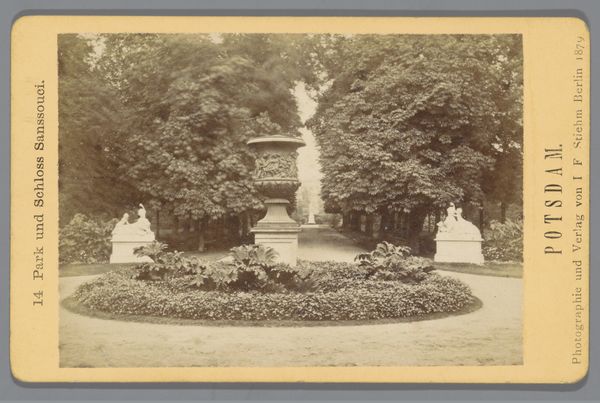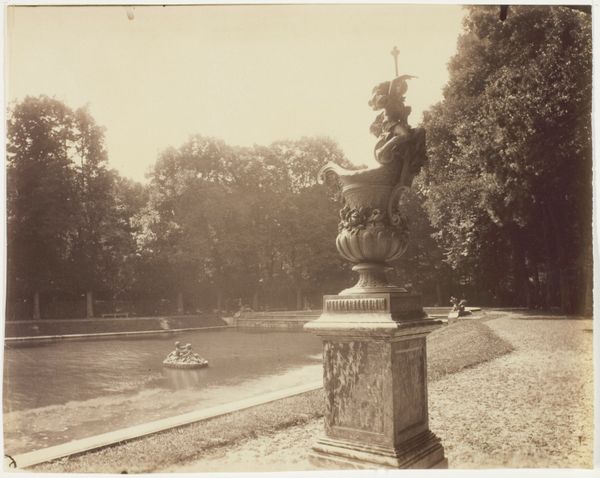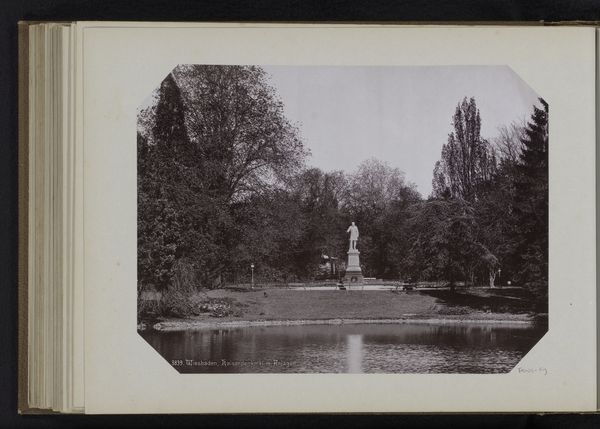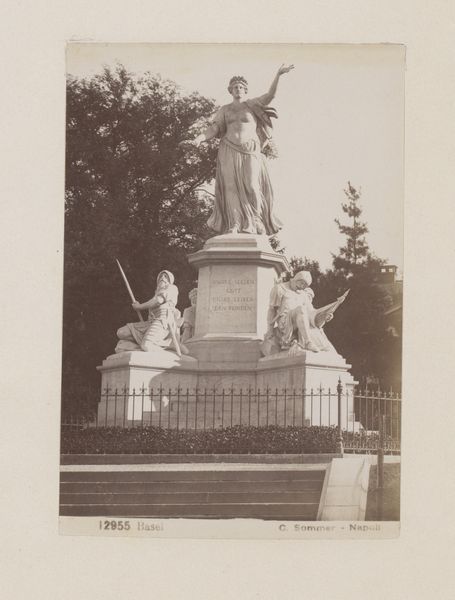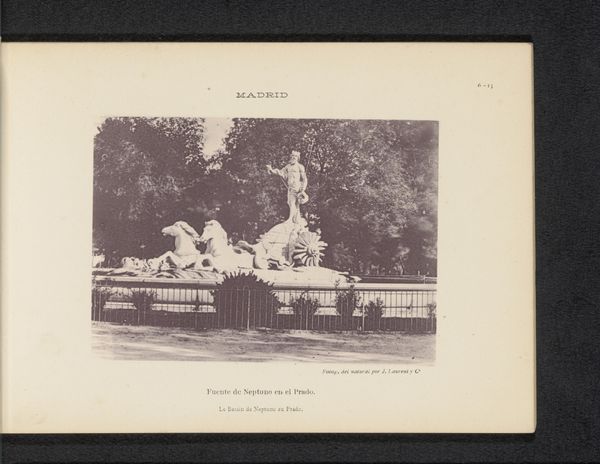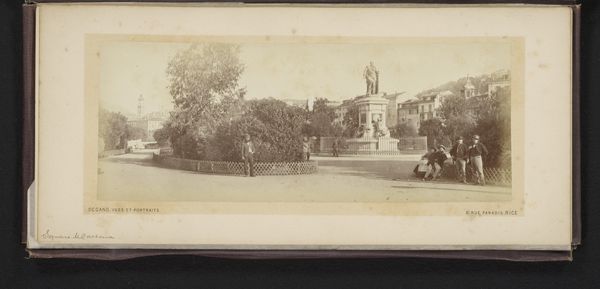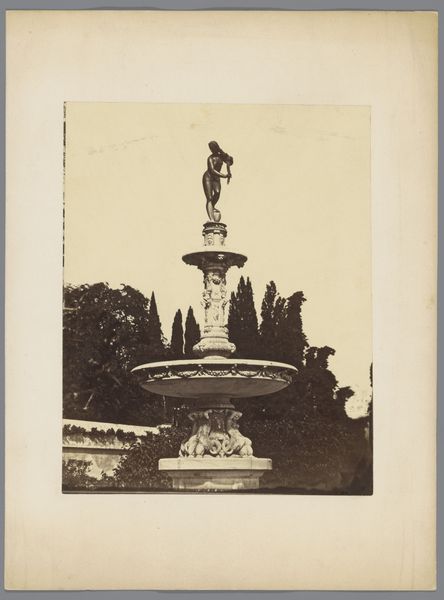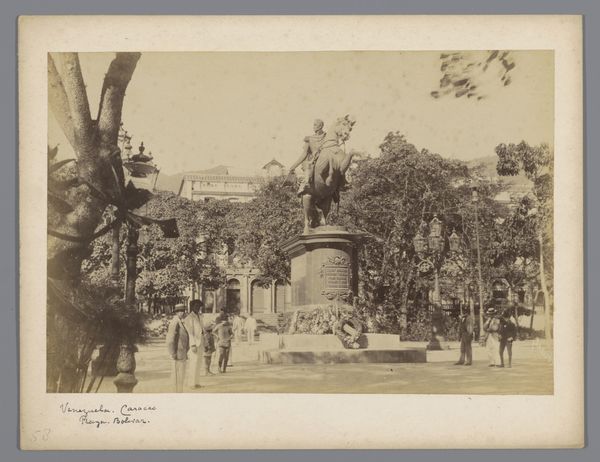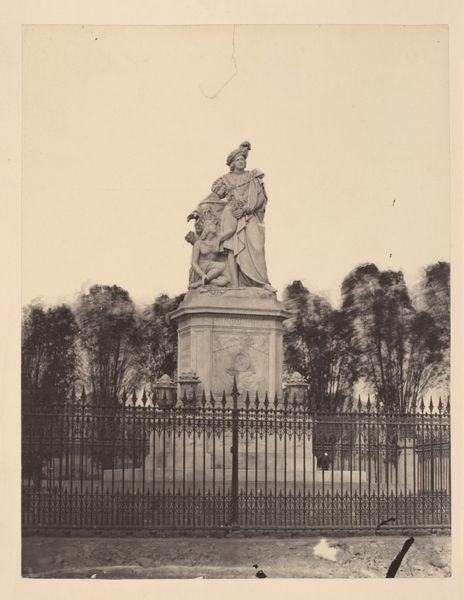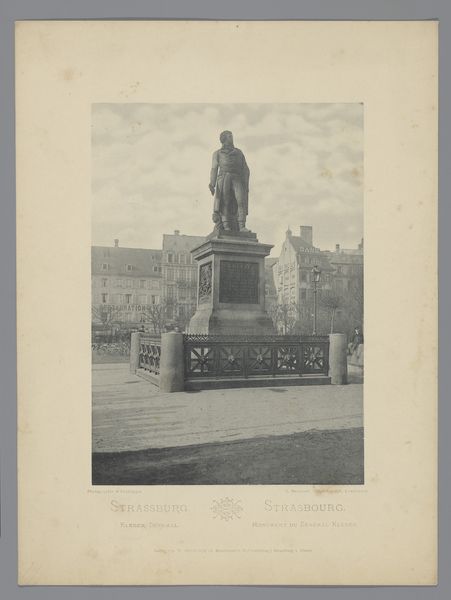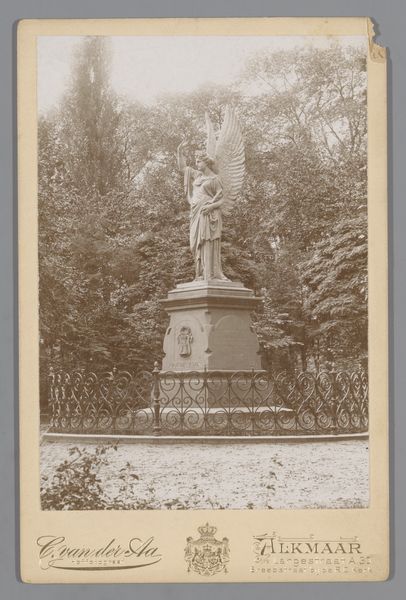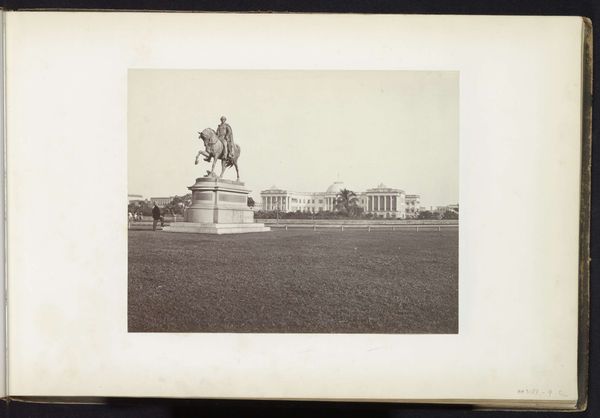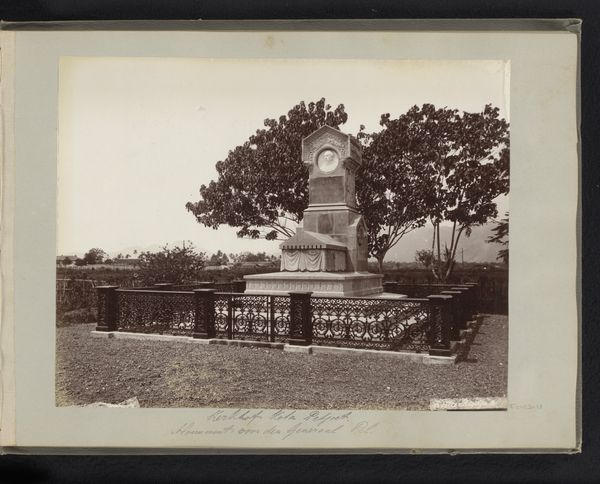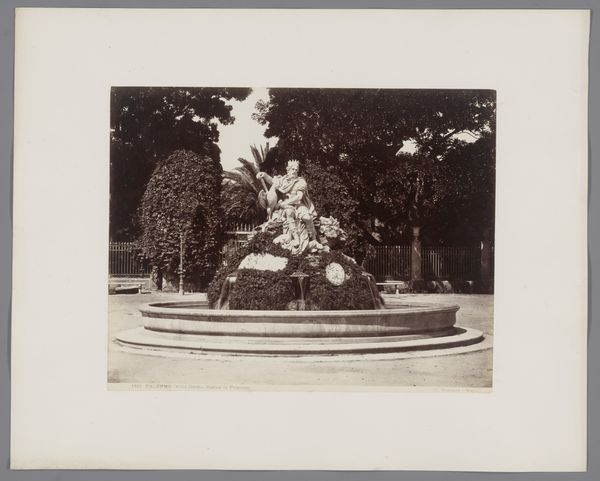
Dimensions: height 258 mm, width 355 mm
Copyright: Rijks Museum: Open Domain
Curator: This photograph captures the Oorlogsmonument, or War Monument, located in the Hofgarten park in Düsseldorf. The photo itself dates back to 1897 and is now part of the Rijksmuseum's collection. Editor: The first thing that strikes me is the sculpture's placid stillness. It is monochromatic, so the subtle interplay of light and shadow across the figures is especially pronounced. It gives a rather peaceful, perhaps even melancholic air to the monument. Curator: Absolutely. Neoclassical monuments often seek to evoke idealized versions of the past, but the image itself, especially in a photograph, can be laden with symbolism. Notice how the draped figure reclines with what seems to be a lion by his side. One has to consider the legacy of German militarism in the light of that imagery. Editor: That draped figure’s posture almost appears to be deliberately echoing classical funerary sculptures, but perhaps a point more to the power dynamic at play. This, coupled with the recumbent lion—the very symbol of dominance. Is this really about mourning, or is it really celebrating something darker? Curator: These symbols resonate across centuries. The lion represents strength and courage, of course. The figure could be an allegorical representation of Germania, perhaps mourning the losses of war while also projecting strength and resilience, ready for times to come. This tension between grief and national pride seems very indicative of late nineteenth-century nationalism. Editor: It’s not simply a memorial for a tragic occurrence in the past. If the intent were primarily bereavement, it seems unlikely we’d be seeing all these classicist poses and forms so frequently associated with victory and domination. Is it not a sign to watch out to possible future conflicts? Curator: Memorials are hardly ever simple acts of remembrance, I believe. Their public nature imbues them with messages intended for posterity and, to be sure, to encourage the people and unify society. What lessons about conflict we want the subsequent generations to remember and to be taught. It appears from our vantage that the Hofgarten is just another gorgeous area within a complicated cultural framework of loss, patriotism, and iconography. Editor: Yes. To visually break down complex emotional ambivalence in such a composition that draws upon the familiar symbolic structures is not so subtly brilliant and intriguing. I look forward to reexamining that context through time, if one gets to have this chance in the future.
Comments
No comments
Be the first to comment and join the conversation on the ultimate creative platform.
